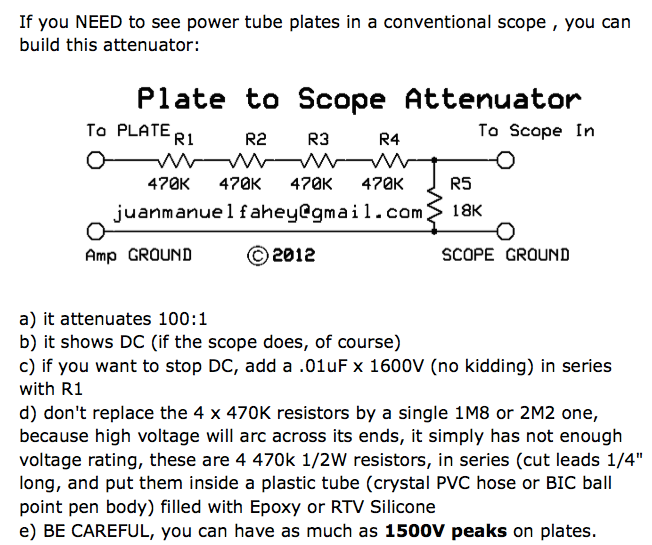Originally posted by LondonSi72
View Post
We have had previous discussions on this site regarding probing high voltage circuits using modern oscilloscopes and various probe designs. There are pitfalls that are not obvious. Rather than repeat the information here I'll refer you to one of the archived discussions at http://music-electronics-forum.com/t31492/ In particular I recommend that you note post numbers 15, 16, 21 and 22. This knowledge could save your DSO Nano from damage.
nickb's idea about adding a couple of back to back 24V zeners or TVS diode across the scope input seems like a good idea in your case. Note that those would be placed between the DC blocking cap and the scope input.
Cheers,
Tom




Comment